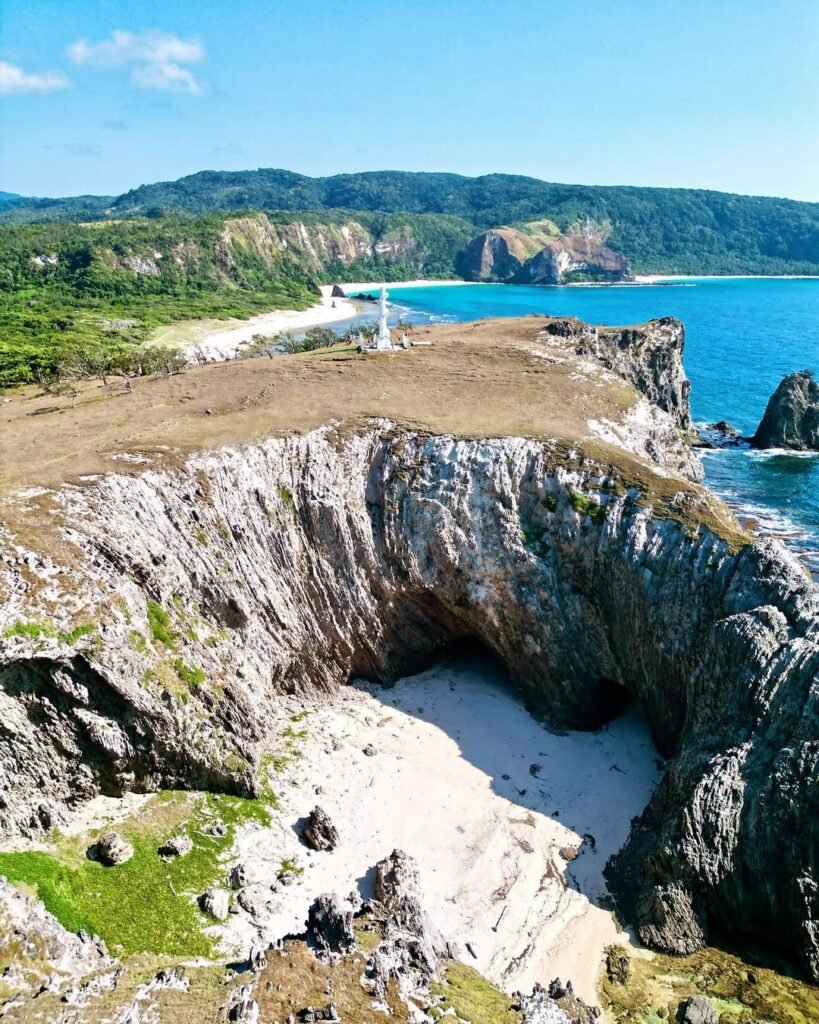
Introduction
When I first walked through the entrance of the Botanical Garden in Baguio City, I was immediately drawn to the cool mountain air, the earthy scent of pine trees, and the colorful floral beds that framed the winding paths. Elderly locals in traditional Cordilleran attire offered greetings and posed for photos, adding a layer of cultural authenticity that made the experience unforgettable.
Located along Leonard Wood Road, the Botanical Garden Baguio is a beloved spot for both tourists and residents seeking a peaceful retreat amid nature and heritage. Known for its blend of indigenous art, historical relevance, and scenic gardens, this park is more than just a photo-op — it’s a gateway to understanding Baguio’s cultural soul. Whether you’re after serene strolls, historical insight, or vibrant floral photography, this tourist spot in Baguio City is one you shouldn’t miss. It remains one of the most visited and celebrated green spaces in the region.
Table of Contents
Overview & History of Botanical Garden in Baguio
The history of Botanical Garden in Baguio is deeply intertwined with the city’s development as a colonial hill station and cultural capital of the Cordilleras. Established in the early 1900s during the American colonial period, the site was envisioned as a botanical reserve that would showcase native flora while offering a serene space for public recreation. Over the decades, this green space has evolved from a scientific garden into a vibrant tourist attraction known today as Botanical Garden Baguio City.
In the mid-20th century, the garden briefly served as a zoo and was renamed “Imelda Park” in honor of the former First Lady during the Marcos administration. Following the EDSA Revolution, it reclaimed its identity and historical value as the Botanical Garden. Later, in 2009, during Baguio’s centennial celebration, it was also referred to as “Centennial Park,” marking 100 years of the city’s incorporation.
One of the garden’s most poignant reminders of its past is the Japanese tunnel found within the premises. Dug during World War II, this cave in Botanical Garden in Baguio City once served as a shelter and storage area for Japanese forces. Today, it stands as a quiet monument to the city’s wartime history.
In recent years, the garden underwent a major renovation aimed at preserving its natural charm while upgrading its amenities. The redesigned layout features more accessible paths, curated gardens, and artistic installations. Its rebranding included an emphasis on Cordilleran identity, with native huts, tribal sculptures, and mural art reflecting the traditions of indigenous communities.
Botanical Garden Baguio City has thus become more than just a place for flowers and strolls—it is now a space that honors regional culture, commemorates local history, and supports environmental sustainability. It’s this seamless blend of nature and heritage that continues to draw both first-time visitors and returning locals alike.
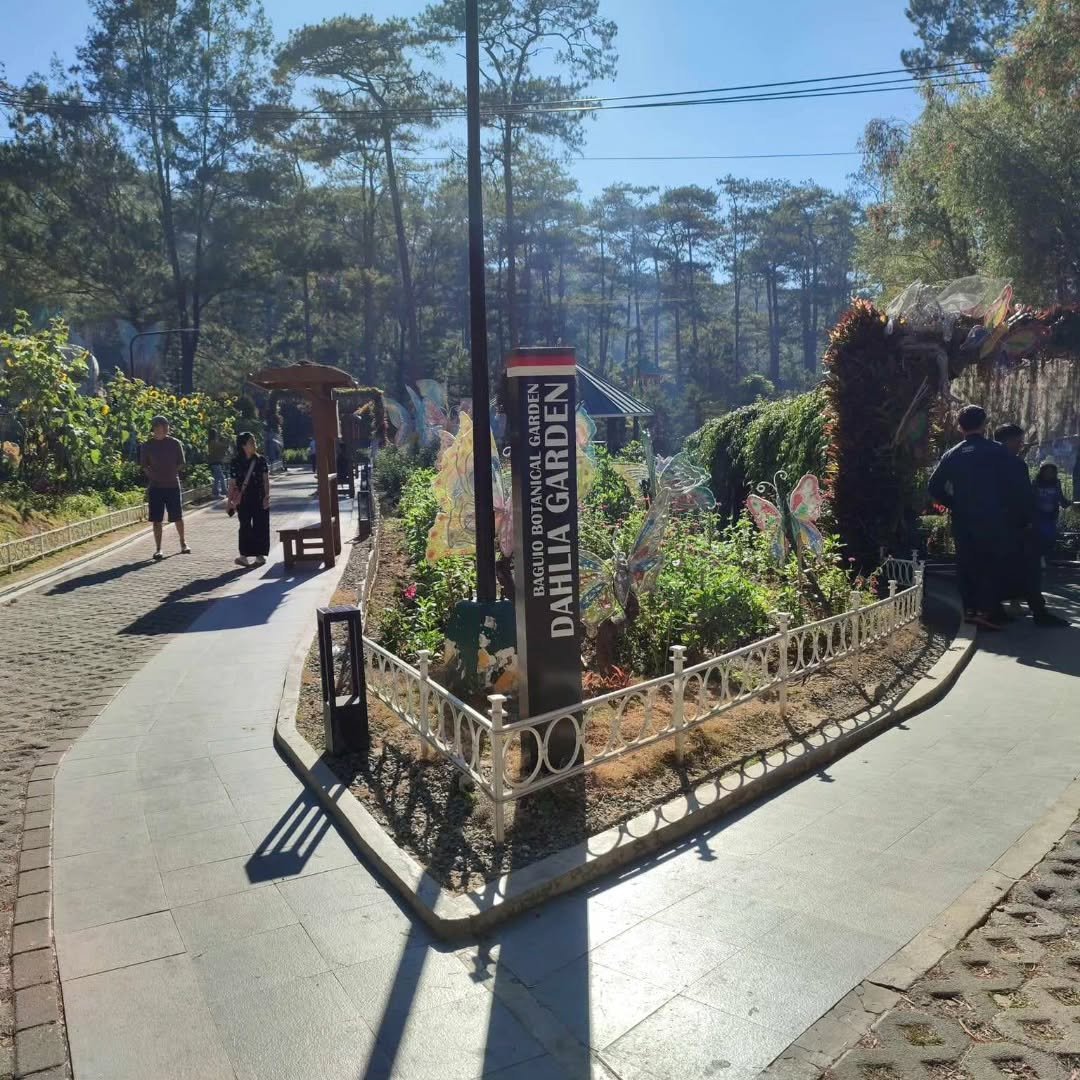
Main Attractions & What to Do in Botanical Garden
Cordillera Village
One of the most culturally enriching areas inside the Botanical Garden Baguio City is the Cordillera Village. Here, visitors are transported into a miniature world of indigenous Cordilleran life through the presence of authentic native huts known as Ifugao or Kalinga houses. These structures are made from traditional materials such as cogon grass, bamboo, and wood, and reflect the daily living spaces of highland communities.
Life-sized wooden sculptures and totemic carvings are scattered throughout this section. Some of the sculptures depict ancestral figures, tribal warriors, and community rituals, offering a glimpse into the spiritual and cultural practices of the Cordillera peoples. Cultural performers dressed in traditional attire often grace the area, providing photo opportunities in exchange for small tips—a respectful and interactive way to engage with local traditions.
Floral Gardens & Themed Displays
If you’re wondering what to do in Botanical Garden aside from appreciating heritage, the lush floral sections are the perfect escape. Each section blooms with vibrant colors and fragrances, from ornamental orchids and vivid dahlias to hardy cacti and succulents. Depending on the season, flower arrangements change regularly, offering something new for returning guests.
Another must-see feature is the series of international friendship gardens. These themed displays are inspired by Baguio’s sister cities across the globe. The Japanese Garden has a torii gate and serene landscaping, while the Korean, Thai, and Chinese gardens are adorned with distinctive structures like pagodas, lanterns, and even elephant statues—each donated as a symbol of peace and partnership. These areas provide great photo opportunities and reflect the city’s strong diplomatic and multicultural ties.
Japanese Tunnel (Cave)
A surprising historical element awaits visitors inside the garden—a World War II-era Japanese tunnel, also referred to as the cave in Botanical Garden in Baguio City. Measuring about 150 meters, the tunnel was once used by Japanese forces for shelter and supplies. Today, it has been stabilized and made accessible to tourists, offering a brief but immersive look into the city’s wartime past.
Walking through the dim, narrow passage is a quiet, reflective experience. When I visited, the cool air and echo of footsteps inside the tunnel made the history feel remarkably close. It’s a short but unforgettable segment of the garden, and ideal for history buffs who want something beyond flora and fauna.
Art Installations & Exhibits
The creative spirit of Baguio is showcased through various sculptures and art pieces spread across the park. Among the most iconic is “The Builders,” a sculpture by renowned artist Ben-Hur Villanueva. It features five figures—a Cordilleran, a lowland Filipino, an American, a Japanese, and a Chinese—working together to build the city of Baguio. It’s a tribute to unity and diversity, concepts that resonate deeply in this melting pot of cultures.
Throughout the garden, visitors will also find smaller open-air galleries and occasional art exhibits curated by local creatives. These installations blend harmoniously with the natural surroundings, encouraging guests to appreciate art, history, and nature all at once.
So whether you’re in search of peace and greenery or you’re curious about local culture, there’s no shortage of enriching activities. For travelers asking what to do in Botanical Garden, this destination truly delivers a well-rounded, immersive experience.
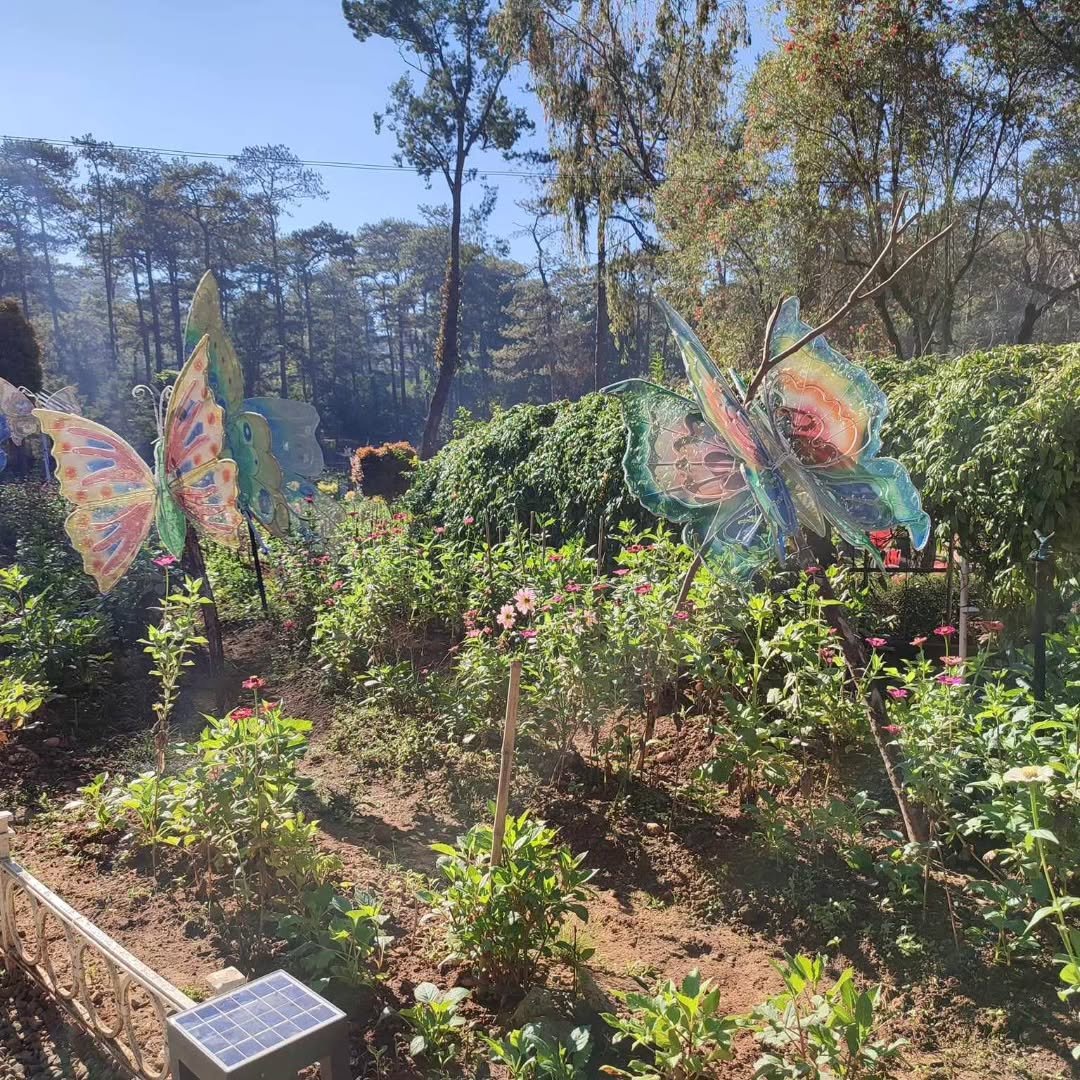
Opening Hours & Closing Time
The opening hours of Botanical Garden in Baguio are from 6:00 AM to 6:00 PM daily, including weekends and holidays. The park adheres to a strict schedule, with the closing time of Botanical Garden in Baguio set at sundown, ensuring that visitors can enjoy the park safely during daylight hours. Last entry is generally around 5:30 PM.
To make the most of your visit, aim to arrive early in the morning. Weekday mornings between 6:00 AM and 9:00 AM are ideal for avoiding large crowds, especially during weekends, holidays, and school breaks when foot traffic is heaviest. Visiting during these early hours also means cooler temperatures, better lighting for photography, and a more peaceful ambiance.
Avoid peak hours—typically from 10:30 AM to 3:30 PM—when day-tour groups and student field trips are common. If you’re after quieter walks and uninterrupted photo opportunities, stick to early or late visits.
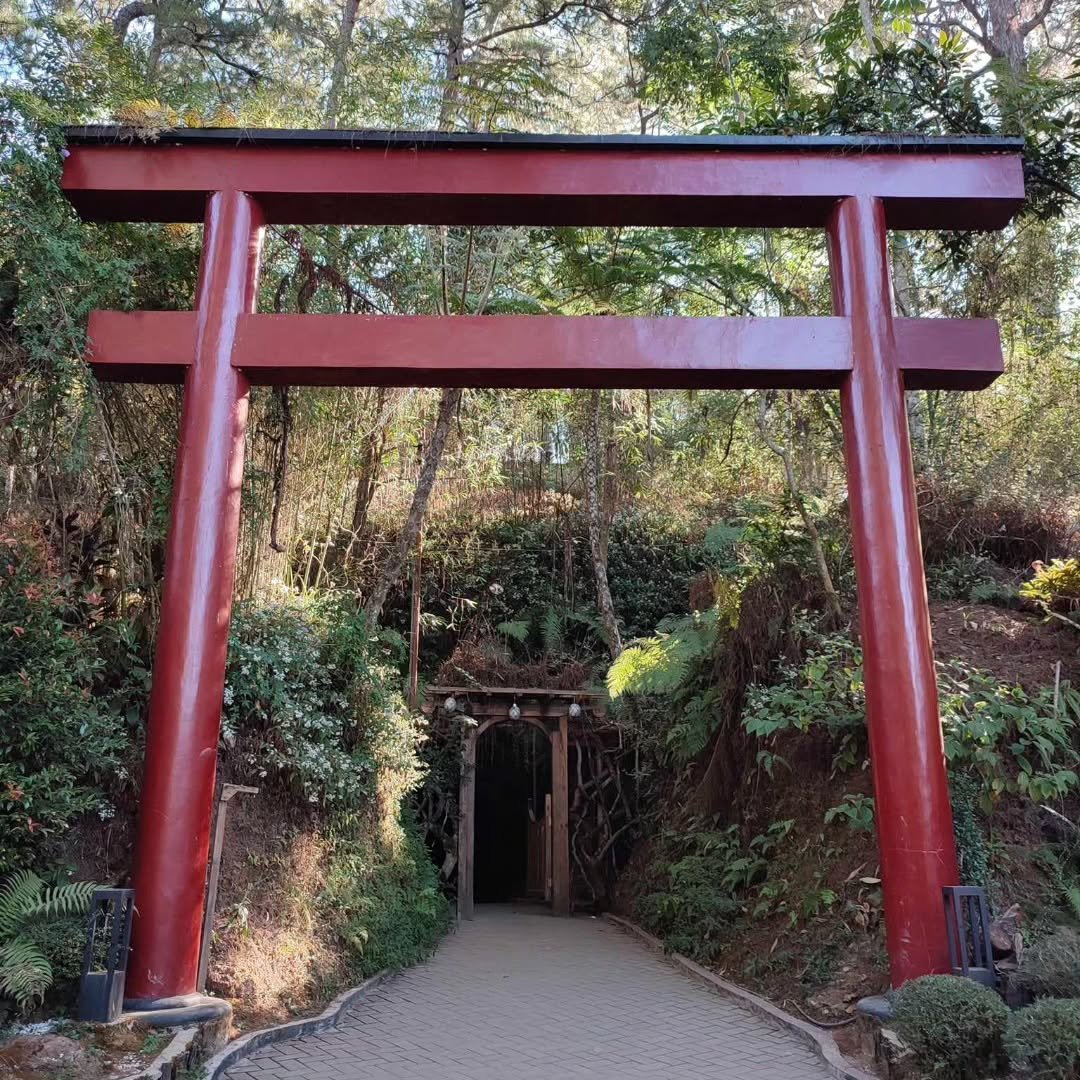
Entrance Fees in Botanical Garden in Baguio City (2025 Updated Rates)
Wondering how much is the entrance fee in Botanical Garden Baguio? As of 2025, updated rates are now in place to support the park’s ongoing maintenance and cultural programs. Here’s the complete breakdown:
Non-resident Adults (Tourists): ₱100
Non-resident Children (12 years and below): ₱25
Senior Citizens/PWDs (with valid ID): ₱80
Baguio City Residents (with valid ID or proof of residence): ₱50
Resident Children (12 years and below): Free
Resident Senior Citizens/PWDs: ₱25
These entrance fees are collected at the main gate. Children under 2 years old are usually admitted free. For group tours, it’s advisable to check with the city tourism office for any applicable discounts or special arrangements.
This updated Botanical Garden Baguio entrance fee 2025 ensures sustainable tourism while keeping the attraction affordable for families, students, and senior visitors.
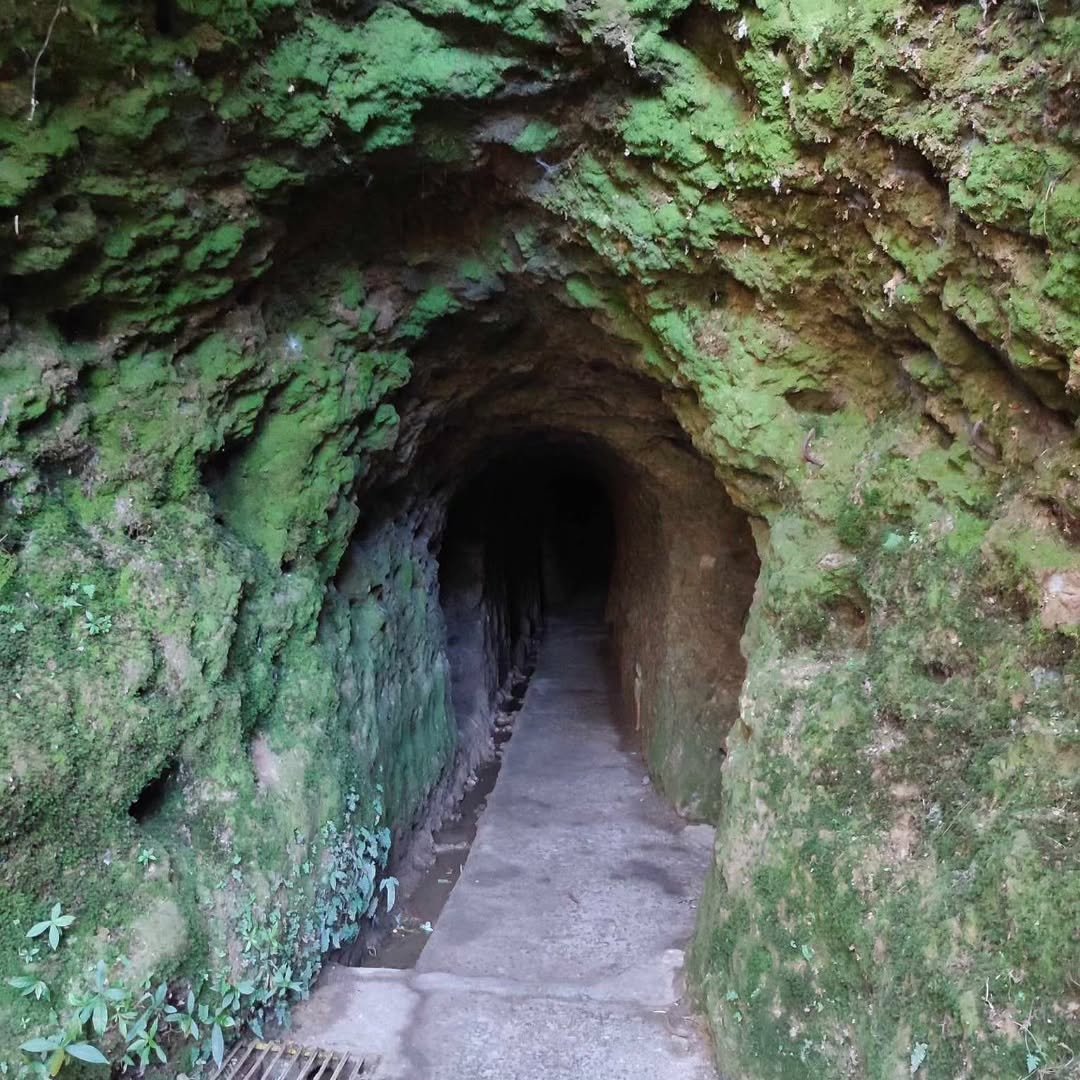
How to Get to Botanical Garden in Baguio City
The location of Botanical Garden is along Leonard Wood Road, just a few minutes away from the city center and adjacent to several major landmarks. It’s easily accessible whether you’re commuting or driving.
Here’s how to get to Botanical Garden in Baguio City from some popular points:
From The Mansion: Take a short jeepney or taxi ride heading west on Leonard Wood Road. Travel time is around 3–5 minutes. It’s also walkable in under 15 minutes.
From Wright Park: The garden is just 600 meters away. A scenic 10-minute walk or a 2-minute taxi ride will get you there quickly.
From SM Baguio: Ride a Pacdal or Mines View jeepney and ask to be dropped off at Botanical Garden. The ride takes about 10–15 minutes depending on traffic.
From Manila: If arriving via private vehicle, take Marcos Highway or Kennon Road and navigate to Leonard Wood Road. Public buses drop off at Governor Pack Road terminal, from which you can ride a jeepney or taxi.
You can easily spot the Botanical Garden map signage at the entrance, guiding visitors through its various themed sections. Parking is available, but spaces are limited during weekends and holidays.
Facilities & Accessibility
The Botanical Garden is well-equipped with essential amenities to ensure visitor comfort. Clean restrooms are available near the entrance and in several zones throughout the park. Some restrooms have attendants and may request a small donation or tip.
Food vendors and kiosks line the entrance area, offering street snacks like grilled corn, taho, and strawberry ice cream. Inside, a small café called Tam-awan Café provides Cordilleran coffee and refreshments.
Free public parking spaces are available outside the gate. However, they fill up fast during peak hours, so arriving early is advisable. Limited priority parking is also offered for PWDs and senior citizens.
For accessibility, most primary paths have been updated to accommodate wheelchairs and strollers. Ramps and railings are strategically placed across sloped areas. A few rough paths still exist, but most major attractions are accessible for all ages and mobility levels.
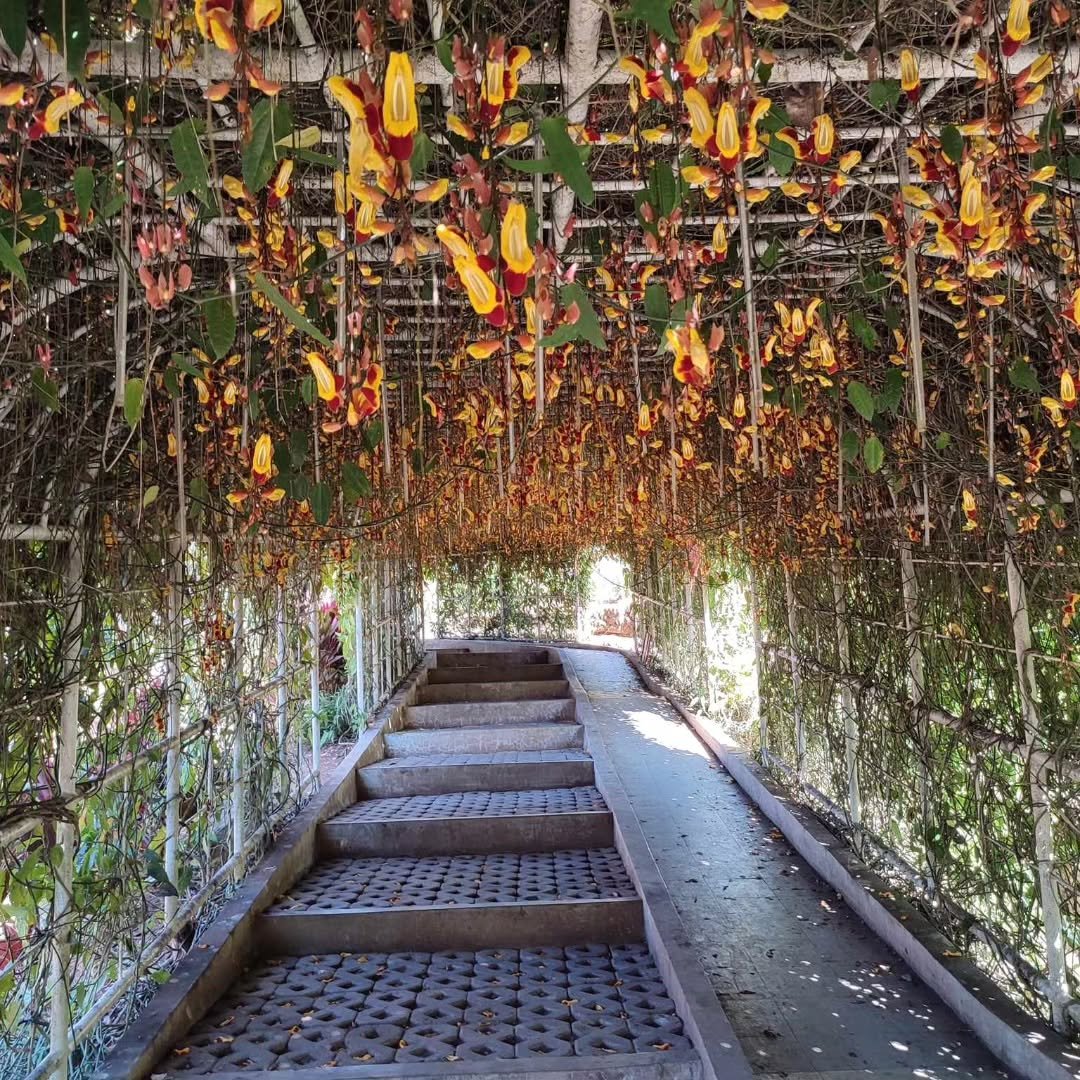
Best Time to Visit Botanical Garden
The best time to visit Botanical Garden in Baguio is during the early morning hours, especially on weekdays. Between 6:00 AM and 9:00 AM, the garden is at its most tranquil. The soft morning light creates ideal conditions for photography, the temperature is cool, and the air is crisp—perfect for a quiet stroll through the floral and cultural displays. Weekends, especially around midday, tend to draw larger crowds, so visiting early helps avoid the usual foot traffic from families, student groups, and guided tours.
Seasonal Recommendations
Baguio’s climate makes the garden accessible year-round, but the dry season from November to May offers the most reliable weather for a visit. During these months, clear skies and vibrant blooms make the garden especially photogenic. The rainy season (June to October), while less ideal, can still be enjoyable if you bring an umbrella and waterproof shoes. The misty atmosphere during this time adds a unique mood to photos but may limit visibility.
Photography Tips
Photographers will find endless inspiration here. For wide shots, use the garden’s open paths framed by pine trees or native huts to create visual depth. Floral close-ups shine best during morning when petals are fresh and dewy. Golden hour—just after sunrise—is excellent for soft, warm lighting, particularly around the Cordillera Village and international friendship gardens.
For portraits, the Japanese Garden’s torii gate and the art installations like “The Builders” sculpture provide stunning backdrops. If you’re capturing locals in traditional attire, always ask politely and offer a small tip in exchange for a posed photo.
Whether you’re a casual smartphone shooter or a DSLR enthusiast, timing your visit well ensures your photos truly reflect the garden’s rich cultural and natural beauty.
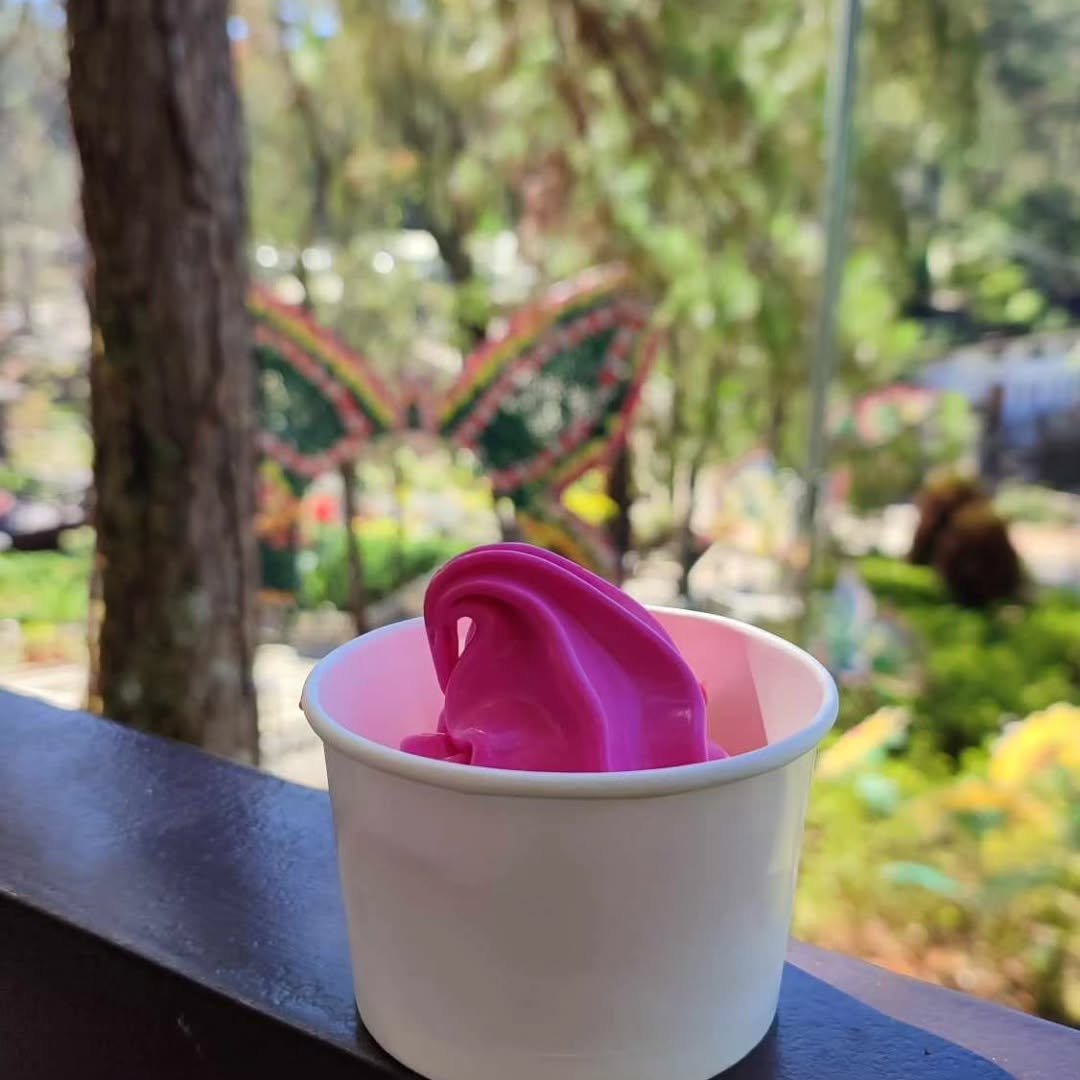
Tourist Spots Near Botanical Garden
Nearby Attractions Worth Visiting
If you’re planning a trip to the Botanical Garden in Baguio City, you’re in luck—several iconic tourist destinations are just a stone’s throw away. Whether you’re walking or riding a short jeepney or taxi, these nearby attractions offer great opportunities to extend your itinerary and make the most of your Baguio visit. If you’re searching for a top-rated tourist spot near Botanical Garden, here are the best options:
-
Wright Park – Located less than 10 minutes away on foot, Wright Park is famous for its Pool of Pines, horseback riding circle, and shaded walking trails. It’s a relaxing place to cool off and people-watch.
-
The Mansion – Just across from Wright Park, The Mansion is the official summer residence of the Philippine President. Although access is limited to the gates, the elegant Spanish-style architecture and manicured lawns are popular for quick photo stops.
-
Mines View Park – About a 10-minute drive from the garden, this spot offers a sweeping view of the mountains and valleys of the Cordillera region. It’s also home to souvenir shops, local crafts, and food stalls.
-
Camp John Hay – Once a U.S. military recreation base, this sprawling complex is now a leisure zone with picnic areas, historical landmarks, shopping outlets, and restaurants. It’s only 15–20 minutes by car and great for an afternoon stroll or coffee break.
-
Burnham Park – Located in the city center, about 10–15 minutes from Botanical Garden, this park is ideal for families. Enjoy a paddleboat ride on the lagoon, rent bikes, or simply relax by the rose garden.
Suggested Itinerary for One Day
If you’re short on time, here’s a sample itinerary for a well-paced day:
-
8:00 AM – Start at Botanical Garden (enjoy the cool morning).
-
9:30 AM – Walk to Wright Park and The Mansion.
-
11:00 AM – Head to Mines View Park for sightseeing and snacks.
-
1:00 PM – Lunch near Camp John Hay, followed by a stroll or shopping.
-
4:00 PM – End your day at Burnham Park before dinner downtown.
This route minimizes backtracking and traffic while letting you visit multiple tourist spots near Botanical Garden in one go.
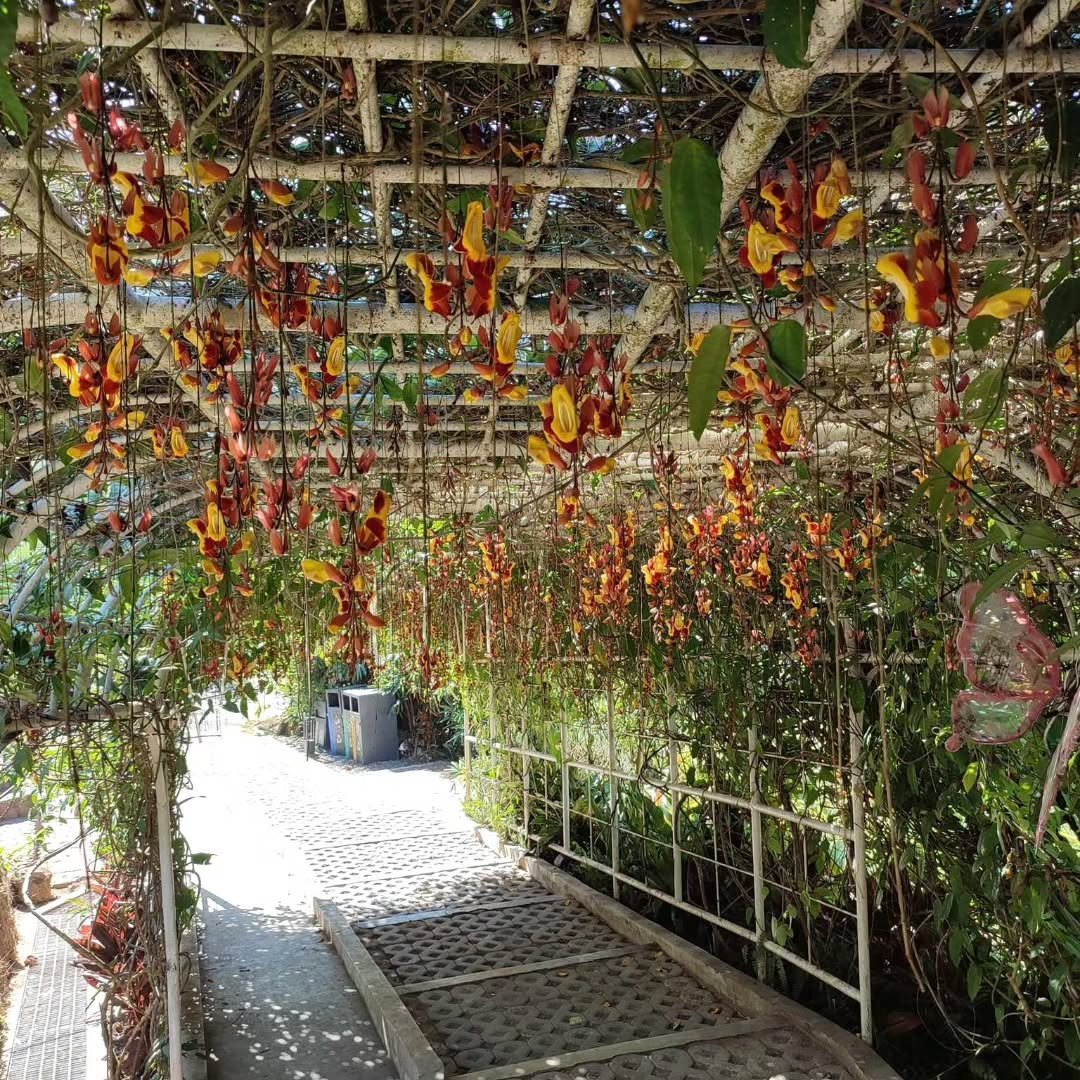
Where to Eat Near Botanical Garden
Local Eats and Street Food
If you’re wondering where to eat near Botanical Garden, you’ll find a mix of street food favorites, casual dining spots, and hidden gems just steps away. Right outside the garden’s entrance, vendors sell grilled corn, strawberry taho, fish balls, and other street-side snacks that make for a quick and authentic taste of Baguio’s street food scene.
Recommended Restaurants and Cafes
Arca’s Yard – Just a short ride uphill, Arca’s Yard combines homey ambiance, museum-like decor, and scenic mountain views. Their camote pie and mountain tea are perfect post-garden treats.
Café by the Ruins – Located near downtown, about 10–15 minutes away, this iconic café is worth the short detour. Try the Baguio Bagnet and fresh lumpia for a hearty Cordilleran-Filipino fusion meal.
Tam-Awan Café (inside the garden) – If you want something light without leaving the grounds, this small café serves native Cordilleran coffee, hot chocolate, and pastries.
Mother’s Garden and Café – Tucked away in Barangay Quezon Hill, this quiet spot offers farm-to-table meals, fresh juices, and vegetarian options. The path there is scenic and rewarding.
Lemon and Olives Greek Taverna – For those craving international cuisine, this is a favorite for Mediterranean dishes. It’s located along Outlook Drive, just a few minutes away by car.
Insider Tip
When I visited, I grabbed a quick snack from the taho vendor stationed just outside the main gate—warm tofu topped with strawberry syrup, which is uniquely Baguio. It’s one of those simple joys that rounds out the experience.
Whether you’re in the mood for a full-course meal, a cozy coffee break, or budget-friendly street eats, the area surrounding Botanical Garden Baguio City offers satisfying choices for every palate. For travelers searching online for where to eat near Botanical Garden, rest assured—you won’t need to wander far to find great food. (350 words)
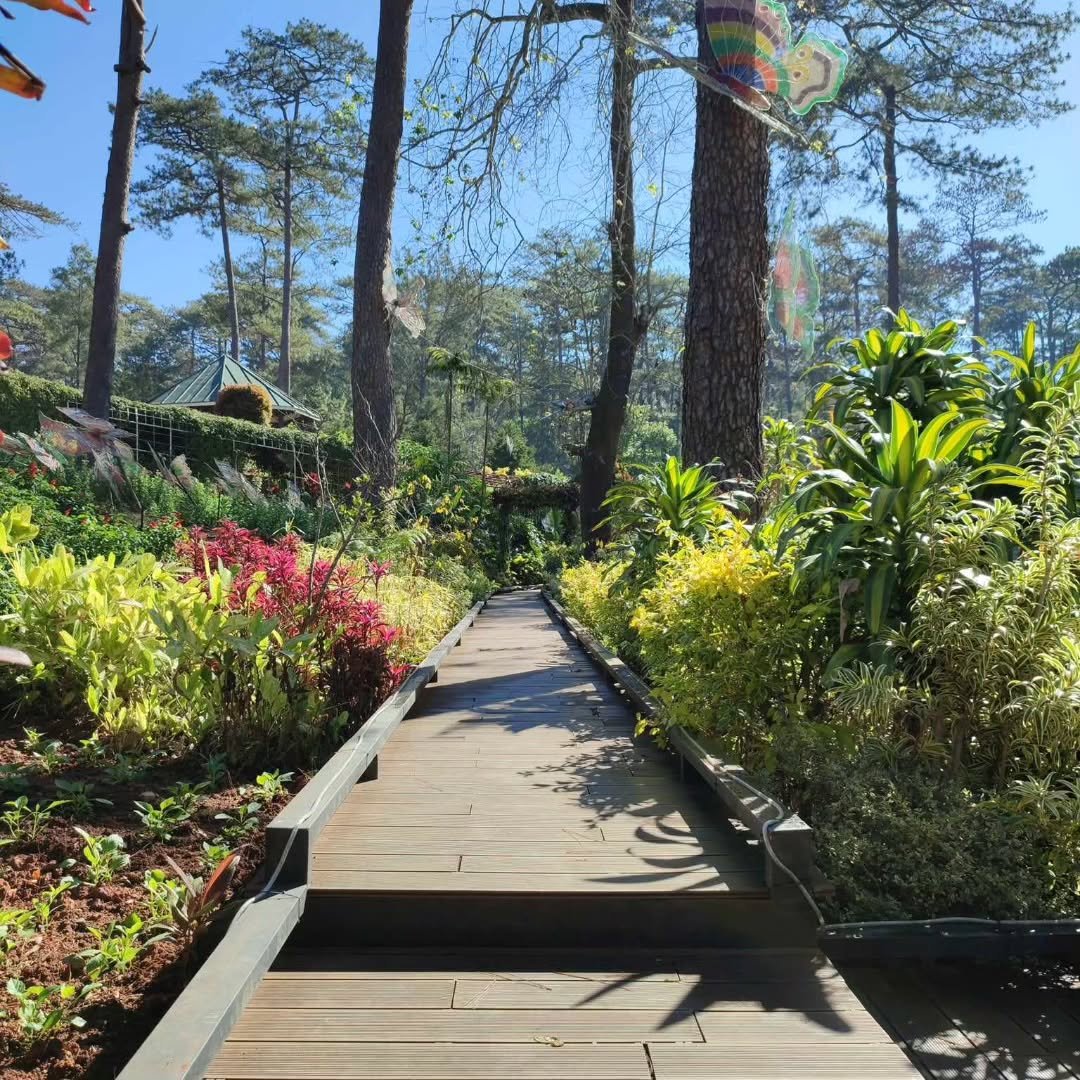
Personal Recommendations & Closing Thoughts
Final Thoughts on Botanical Garden Baguio
Botanical Garden Baguio City is more than just a tourist stop—it’s a place that invites reflection, quiet appreciation, and repeat visits. Each time I return, I discover something new—a different flower in bloom, an updated art installation, or a cultural performance I hadn’t seen before. Its serene atmosphere, combined with its deep historical and cultural layers, makes it one of those rare attractions that never feel repetitive.
Whether you’re a first-time visitor or someone who’s been to Baguio many times, the garden offers a refreshing reminder of why this city is beloved by so many. It’s a peaceful escape from the crowds, a living museum of Cordilleran culture, and a visual feast of landscape design and natural beauty.
As you explore, take time to appreciate the craftsmanship behind the native huts, respect the performers who bring culture to life, and walk lightly among the plants and pathways. Practicing responsible tourism here helps ensure the Botanical Garden remains a sanctuary for both nature and heritage.
For anyone planning a trip to Baguio, I wholeheartedly recommend including this space on your itinerary—not just once, but again and again. It’s a destination that evolves with every season and every step you take.
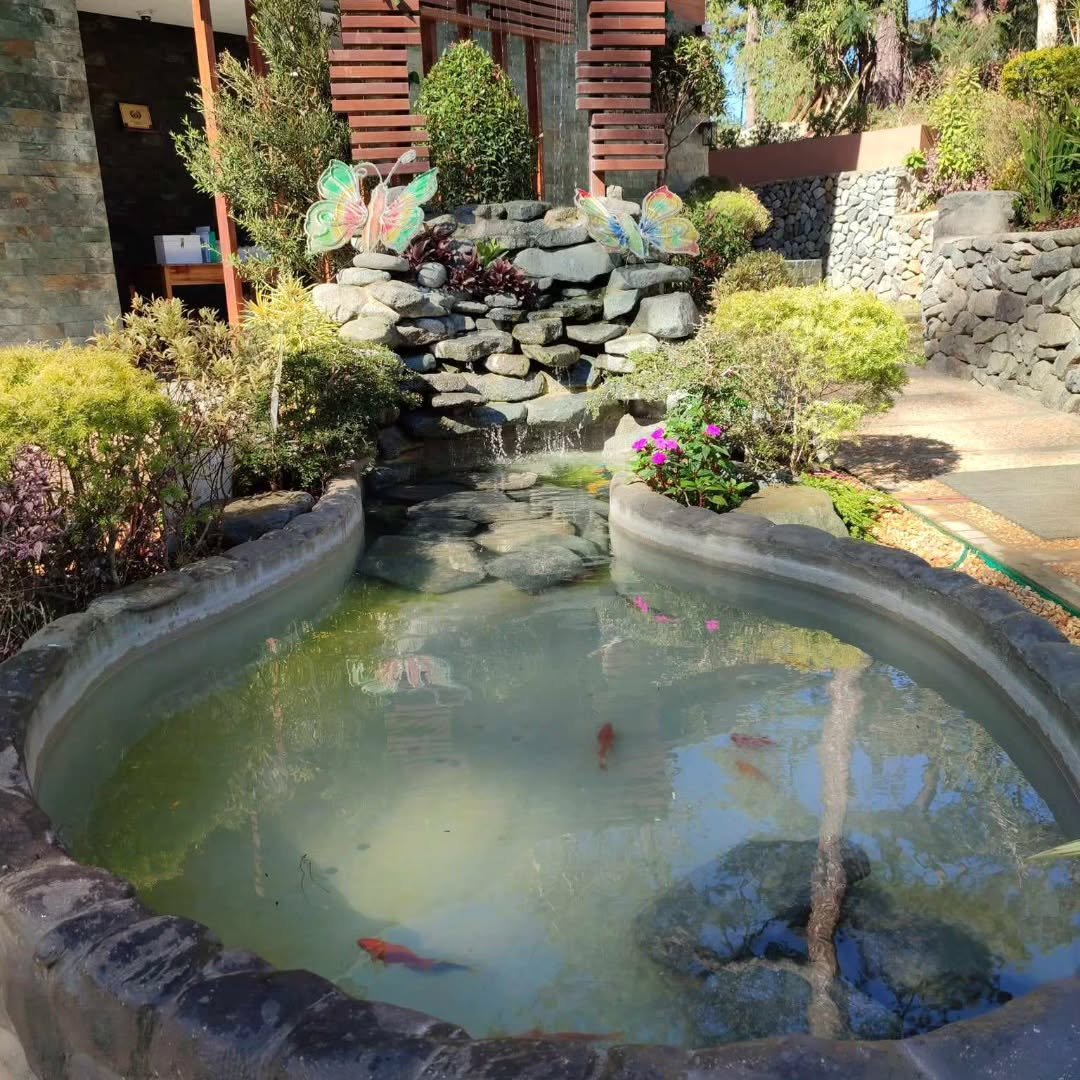
People Also Ask: Frequently Asked Questions About Botanical Garden Baguio City
What is the best time to visit Botanical Garden in Baguio?
The best time to visit Botanical Garden is during the dry season, from November to May, especially in the early morning hours between 6:00 AM and 9:00 AM. This allows for cooler weather, fewer crowds, and better lighting for photos.
How much is the entrance fee in Botanical Garden Baguio?
As of 2025, the entrance fee for non-resident adults is ₱100. Discounts are available for children, senior citizens, PWDs, and Baguio residents.
What can I do inside the Botanical Garden?
You can explore native Cordilleran huts, stroll through themed floral gardens, visit the WWII Japanese tunnel, enjoy art installations, and take photos at international friendship gardens. It’s a blend of history, nature, and culture.
Is the Botanical Garden suitable for kids and seniors?
Yes, it is family-friendly with paved walkways, shaded areas, rest benches, and accessible paths for strollers and wheelchairs. Children enjoy the sculptures and cultural elements, while seniors appreciate the peaceful walking trails.
How do I get to Botanical Garden from The Mansion or Wright Park?
It’s walkable—about 10–15 minutes on foot from both The Mansion and Wright Park. Alternatively, a quick taxi or jeepney ride can bring you there in under 5 minutes.
Are there food options nearby?
Yes, there are food stalls just outside the gate and restaurants like Arca’s Yard, Café by the Ruins, and Tam-Awan Café within short distance. Street food like strawberry taho is also popular.

